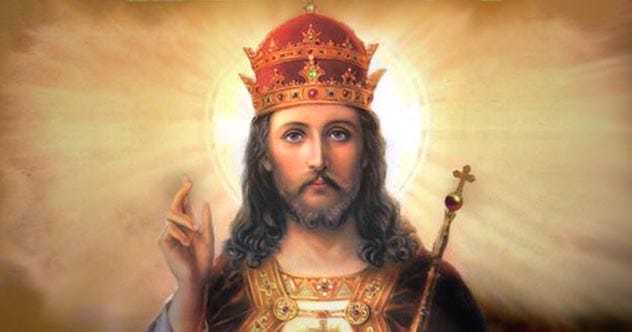Religious beliefs are deeply personal, but when differences evolve into major disagreements, they can lead to schisms that reshape entire faiths. These splits, often rooted in doctrinal or leadership disputes, have had profound and lasting impacts on the world’s religions. Here are ten of the most important religious schisms that have shaken the world.
Devadatta’s Schism
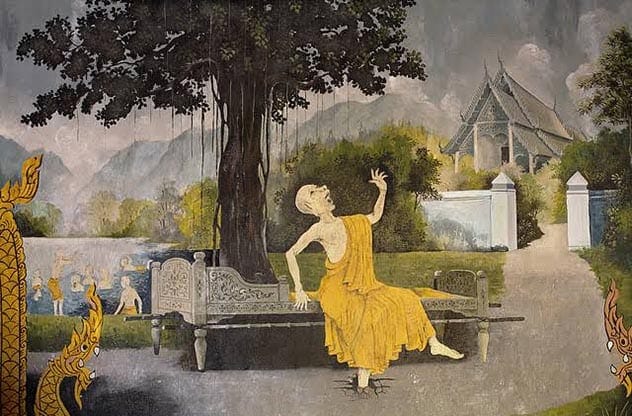
Devadatta’s schism, a short-lived but significant event in early Buddhism, was led by Devadatta, a cousin of the Buddha. He advocated for stricter, more ascetic practices for monks, such as living exclusively in the forest and abstaining from buildings. Devadatta’s attempts to assume leadership were rebuffed by the Buddha, leading to escalating tensions.
His frustration manifested in several assassination attempts on the Buddha’s life. Despite these efforts and briefly gaining 500 followers, Devadatta’s movement eventually faded, though stories of his adherents persisted for centuries. Buddhist legends depict him facing severe consequences for his actions, spending eons in Naraka, a Buddhist hell.
The Radical Reformation (Anabaptism)
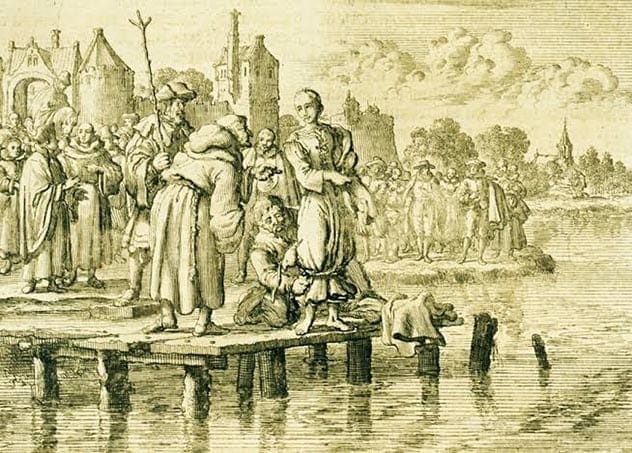
Emerging in the early 1600s, Anabaptism diverged from Protestantism with its belief in adult baptism. Anabaptists asserted that baptism was only valid when the individual fully understood and believed in its significance. Their staunch pacifism and refusal to swear oaths led to severe persecution.
The Münster Rebellion is a notable event in Anabaptist history. Radical Anabaptists, striving to create a communal paradise in Münster, Germany, were led by Bernhard Rothmann, Jan Matthys, and Jan van Leiden. The rebellion culminated in a siege and the execution of prominent Anabaptists, whose bodies were displayed in iron baskets that still hang from St. Lambert’s Church.
The Nestorian Schism

In the 5th century, Nestorius, the Patriarch of Constantinople, sparked controversy by suggesting that Jesus Christ was not fully divine and fully human, but rather two separate entities in one body. This view clashed with the prevailing belief in the unified nature of Christ.
Nestorius also opposed changing the Virgin Mary’s title to Theotokos (“Bringer forth of God”). His teachings were condemned at the Council of Ephesus in 431, leading to his exile. Interestingly, Nestorianism found adherents among Mongol leaders, including the influential queen Sorqoqtani.
The Khawarij Schism
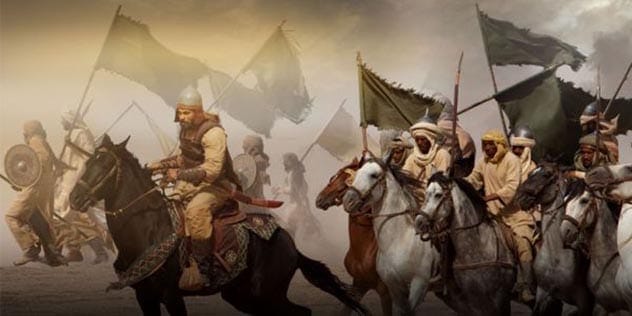
The Khawarij sect emerged after the Battle of Siffin during the First Fitna, a Muslim civil war. They opposed Caliph Ali ibn Abi Talib’s negotiations, asserting that all governmental rule was against God’s will, citing Quran 6:57, “No command but God’s.”
Their beliefs and internal conflicts led to the sect’s decline, but before their dissolution, they assassinated Ali with a poisoned sword. Despite their radical stance, the Khawarij left a significant mark on Islamic history through their opposition to established authority.
The Gnosticism Schism
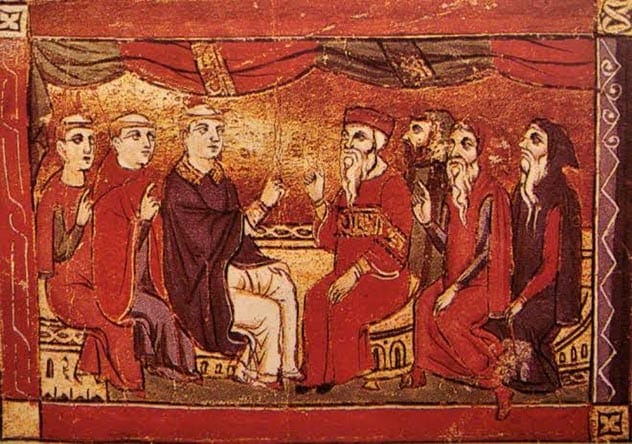
Gnosticism, derived from the Greek word gnosis (knowledge), is often considered an offshoot of early Christianity, though some trace its origins to Judaism. Gnostics believed the physical world was a trap inhibiting spiritual knowledge.
They differed from Judaism and Christianity by asserting that an imperfect being, the demiurge, created the physical universe, while the true God is entirely spiritual. The goal of Gnostics was to escape the physical world and reunite with the divine. Though many Gnostic groups disappeared, some, like Mandaeism, have survived to this day.
Digambara vs. Shvetambara

Jainism, an ancient religion emphasizing peace and asceticism, split into two main schools of thought: Digambara and Shvetambara. The Digambara, meaning “sky-clad,” practice extreme asceticism, with male adherents traditionally renouncing clothing. They also believe that perfect saints need no food, Mahavira never married, and women must become men to achieve moksha (spiritual release).
The Shvetambara, meaning “white-robed,” wear simple white clothing and hold different views on asceticism and the spiritual capabilities of women. Despite these differences, both sects share core Jain doctrines, representing the diverse interpretations within Jainism.
The Protestant Reformation

The Protestant Reformation, sparked by Martin Luther’s “Ninety-Five Theses” in 1517, sought to reform the Catholic Church by addressing practices like indulgences. Luther and other reformers believed these practices were misleading Christians.
While previous attempts at reform had failed, Luther’s use of the printing press allowed his ideas to spread widely. Excommunicated in 1521, Luther’s movement led to the establishment of Protestantism, now the third-largest denomination in Christianity, significantly altering the religious landscape.
The Arianism Schism
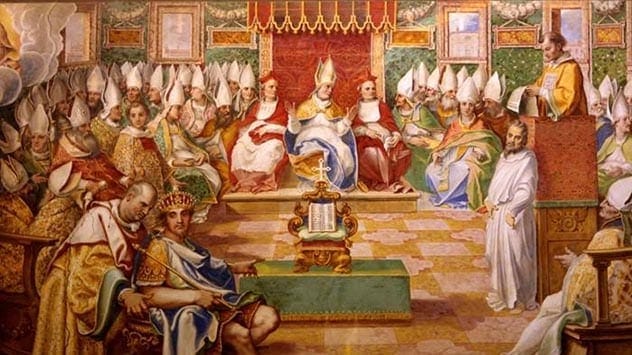
During the 3rd and 4th centuries A.D., Arius, a Christian theologian in Alexandria, argued that Jesus Christ was created by God and not part of the Trinity. This view clashed with Athanasius and others who maintained that Christ’s creation undermined the Christian concept of salvation.
Arianism gained popularity but was officially deemed heretical at the First Council of Nicea in 325. Despite this, Arianism experienced revivals under supportive Roman emperors before eventually declining by the end of the 5th century.
Sunni-Shia Split

The death of the Prophet Muhammad in 632 led to a succession crisis, resulting in the Sunni-Shia split. Sunnis believed that Muhammad’s father-in-law, Abu Bakr, should be the first caliph, while Shias argued that Muhammad had designated his son-in-law, Ali ibn Abi Talib, for the role.
Sunnis comprise the majority (around 90%) of the Muslim population worldwide. Ali, who eventually became the fourth caliph, remains a central figure in Shia Islam. The division between Sunni and Shia Muslims persists to this day, marking one of Islam’s most significant schisms.
The Great Schism
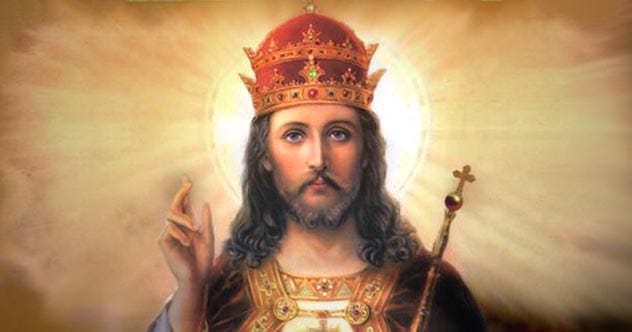
The Great Schism, also known as the East-West Schism, resulted in the division of Christianity into Catholicism and Eastern Orthodoxy. By 1054, differences over clerical celibacy, the use of leavened bread in the Eucharist, the Holy Spirit’s origin, and papal authority reached a breaking point.
The mutual excommunications of Pope Leo IX and Patriarch Michael Cerularius marked the formal split. Despite later attempts at reconciliation, the two churches evolved into distinct entities, reflecting deep-seated theological and cultural differences.
These schisms illustrate the complex interplay of doctrine, power, and cultural context in shaping religious history. They highlight how differing interpretations can lead to lasting divisions, impacting the beliefs and practices of millions worldwide.
What are your thoughts on these historical religious schisms? Leave a comment below!


